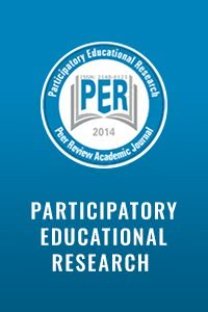Student Engagement, Retention, and Motivation: Assessing Academic Success in Today’s College Students
Despite the attention given to student retention for nearly half a century, college graduation and persistence rates have not improved in over two decades. Furthermore, time to degree rates suggest that it is taking more time to earn degrees. Consequently, there is a significant amount of individual and financial expense required to earn a college degree. Higher education has the responsibility to the society it serves to make postsecondary education a successful experience for students. Is higher education measuring up to meet the learning needs of society? The purpose of this paper was to examine academic success of today’s college students. It is important to know if students are graduating from college. Determining whether or not colleges and universities are meeting the learning needs is critical for higher education. This research study was an archival quantitative, data mining study using data from the Integrated Postsecondary Education Data System (IPEDS) of the National Center for Education Statistics. This study identified the graduation numbers during the years 2009 to 2014 according to available data at public, private, and for-profit 2-year and 4-year universities in the United States. Findings revealed that for-profit 2-year and 4-years institutions saw the greatest increase in institutions and students graduating from 2009 until 2014.
Keywords:
Assessments, student assessments, college assessments, student success, student engagement student motivation,
___
- Andrade, M. S. (2015). Teaching online: A theory-based approach to student success. Journal of Education and Training Studies, 3(5), 1-9.
- Axelson, R. D., & Flick, A. (2011). Defining student engagement. Change: The Magazine of Higher Learning, 43 (1), 38-43.
- Contreras-Higuera, W. E., Martínez-Olmo, F., Rubio-Hurtado, J. M., & Vilà-Baños, R. (2016). University students’ perceptions of e-portfolios and rubrics as combined assessment tools in education courses. Journal of Educational Computing Research, 54(1), 85-107.
- Dodeen, H. (2013). College students' evaluation of effective teaching: Developing an instrument and assessing its psychometric properties. Research In Higher Education Journal, 21.
- Doménech-Betoret, F., & Fortea-Bagán, M. A. (2015). Factorial validity of a questionnaire to evaluate university students’ initial perception of learning evaluation. Electronic Journal Of Research In Educational Psychology, 13(3), 569-586. doi:10.14204/ejrep.37.14113
- Fredin, A., Fuchsteiner, P., & Portz, K. (2015). Working toward more engaged and successful accounting students: A balanced scorecard approach. American Journal Of Business Education, 8(1), 49-62.
- Huskin, P. R. (2016). Engagement strategies for increasing student writing success. Education, 136(3), 283-290.
- IPEDS Data Center. (n.d.). The integrated postsecondary education data system [Database]. Retrieved from http://nces.ed.gov/ipeds (Accessed June 1, 2016).
- Johnson, M. A. (2015). Tangible and intangible student success. Journal of The National Collegiate Honors Council, 16(2), 149-153.
- Liu, O. L., Rios, J. A., & Borden, V. (2015). The Effects of Motivational Instruction on College Students' Performance on Low-Stakes Assessment. Educational Assessment, 20(2), 79-94.
- Korobova, N., & Starobin, S. S. (2015). A comparative study of student engagement, satisfaction, and academic success among international and American students. Journal Of International Students, 5(1), 72-85.
- Leland, M. (2015). Mindfulness and student success. Journal Of Adult Education, 44(1), 19-24.
- Mahlberg, J. (2015). Formative self-assessment college classes improve self-regulation and retention in first/second year community college students. Community College Journal of Research and Practice, 39(8), 772-783, doi:10.1080/10668926.2014.922134
- McKinney, L., Mukherjee, M., Wade, J., Shefman, P., & Breed, R. (2015). Community college students' assessments of the costs and benefits of borrowing to finance higher education. Community College Review, 43(4), 329-354.
- Ribando, S. J., & Evans, L. (2015). Change happens: Assessing the initial Impact of a university consolidation on faculty. Public Personnel Management, 44(1), 99-119 21p. doi:10.1177/0091026014550406
- Shaffer, S. C., Eshbach, B. E.,& Santiago-Blay, J. A. (2015). A dual approach to fostering under-prepared student success: Focusing on doing and becoming. Insight: A Journal Of Scholarly Teaching, 1079-91.
- Slanger, W. D., Berg, E. A., Fisk, P. S., & Hanson, M. G. (2015). A longitudinal cohort study of student motivational factors related to academic success and retention using the college student inventory. Journal Of College Student Retention: Research, Theory & Practice, 17(3), 278-302.
- Stelnicki, A. M., Nordstokke, D. W., & Saklofske, D. H. (2015). Who is the successful university student? An analysis of personal resources. Canadian Journal Of Higher Education, 45(2), 214-228.
- Stephan, J. L., Davis, E., Lindsay, J., Miller, S., American Institutes for, Research, National Center for Education Evaluation and Regional Assistance, & Regional
- Educational Laboratory Midwest. (2015). Who will succeed and who will struggle? Predicting Early College Success with Indiana's Student Information System. REL 2015-078. Regional Educational Laboratory Midwest,
- Strayhorn, T. L. (2015). Reframing academic advising for student success: From advisor to cultural navigator. NACADA Journal, 35(1), 56-63.
- Sternberg, R. J. (2015). A model of institutional creative change for assessing universities as learning organizations. Creativity Research Journal, 27(3), 254-261. doi:10.1080/10400419.2015.1063874
- The Higher Education Act. 20 U.S. C. §1001. (1965)
- Trucker, J. (2014). Honors and the completion agenda: Identifying and duplicating student success. Journal Of The National Collegiate Honors Council, 15(2), 69-92.
- U.S. Department of Education, National Center for Education Statistics, Integrated Postsecondary Education Data System (IPEDS). (2014a). Table 326.10, Fall 2001 and Spring 2007 through Spring 2014, Graduation Rates component.
- U.S. Department of Education, National Center for Education Statistics, Integrated Postsecondary Education Data System (IPEDS). (2014b). Table 360.20, Fall 2001 and Spring 2002 through Spring 2014 Graduation Rates component.
- U.S. Department of Education, National Center for Education Statistics. (2015). The Condition of Education 2015.
- von der Embse, N. P., & Putwain, D. W. (2015). Examining the context of instruction to facilitate student success. School Psychology International, 36(6), 552-558.
- Zapata, G. C. (2016). University students' perceptions of integrated performance assessment and the connection between classroom learning and assessment. Foreign Language Annals, 49(1), 93-104.
- ISSN: 2148-6123
- Yayın Aralığı: Yılda 6 Sayı
- Başlangıç: 2014
- Yayıncı: Özgen KORKMAZ
